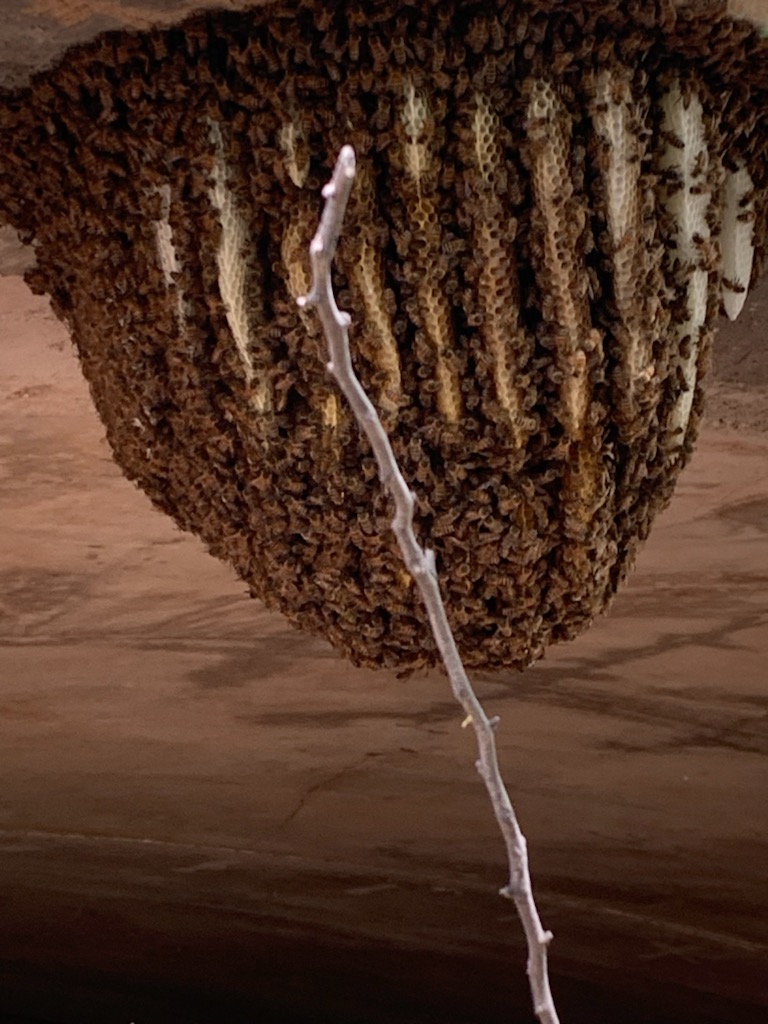r/Beekeeping Wiki
Is this normal comb? It looks weird or is in the wrong place.
One of the first things you’ll see when starting a new hive is your bees drawing fresh comb. It’s important to recognize and correct any issues quickly.
Normal Comb
Fresh beeswax is a pretty white color and very soft. Properly-drawn comb should be perfectly in line with your frames. If you are using foundation, the comb should be flat against it, an extension of the raised pattern stamped on it.
Newly drawn comb on plastic foundation
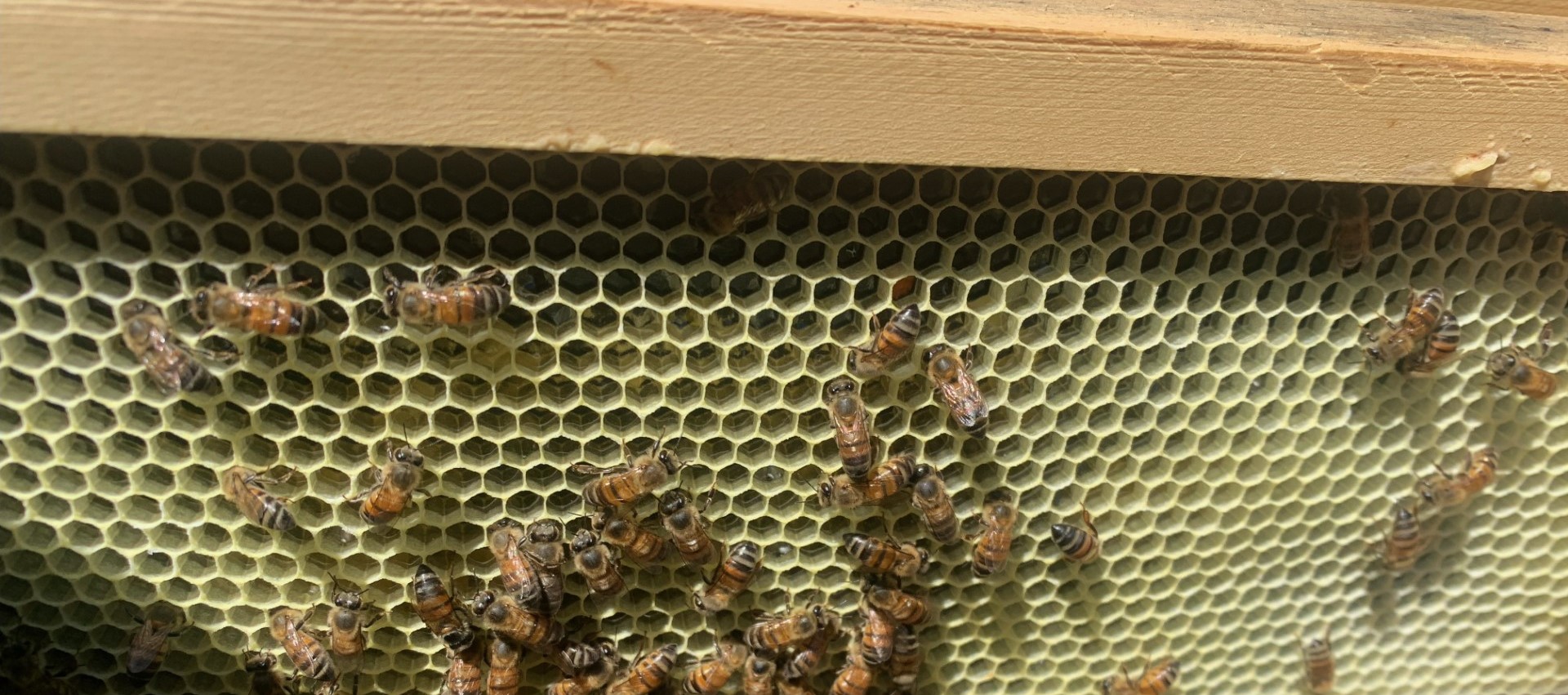
Burr Comb
Burr comb is a general term for any bit of comb that is extends into a place it “shouldn’t” be (according to you). A common place to find it is extending underneath a frame. Bees will often use this area for drone comb - drone cells are larger than regular cells, so don’t fit well into the cell size forced by plastic foundation. Offering a frame or two of drone comb may reduce this by giving them a better place to raise their drones. Unless it’s connecting frames or otherwise getting in the way, burr comb usually isn’t a big deal and can be safely either scraped off or ignored, as you prefer.
Burr comb in a nucleus colony (nuc)
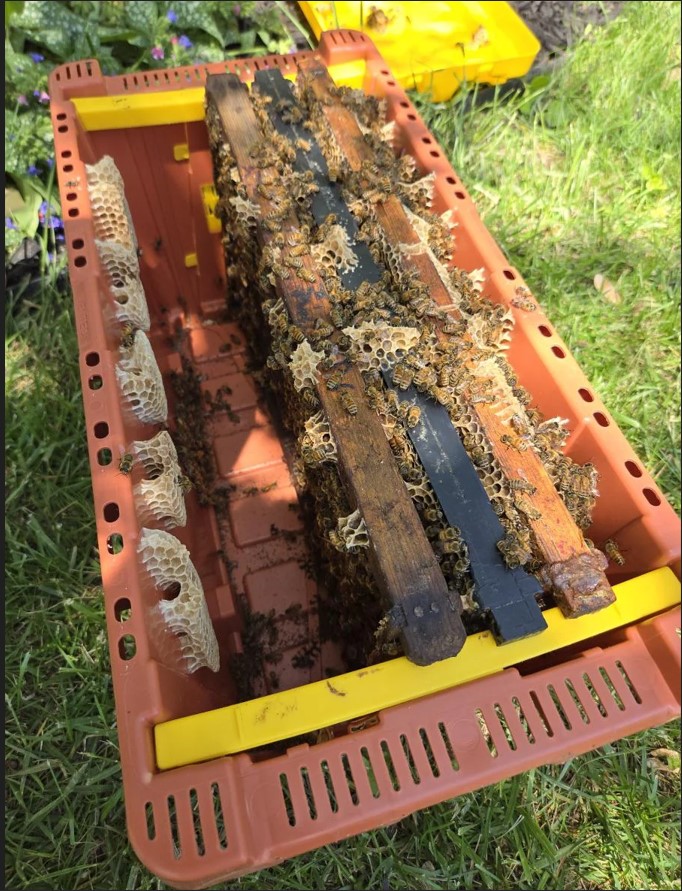
Cross-Comb
Cross-comb is comb that is drawn between two frames, connecting them. This occurs more often in a new hive that does not yet have much drawn comb establishing the normal “bee space.” It’s also a common result of leaving out a frame or otherwise leaving empty space in a hive (so don’t do that). You’ll want to immediately scrape out any cross-comb, as it makes it difficult or impossible to remove frames for inspection without damaging the hive.
“Wonky Comb”
When using plastic foundation, it’s common for bees to draw comb sort of sitting in front of the foundation, rather than affixed directly to it. This can be the result of foundation that has been insufficiently waxed… bees like to draw wax on existing wax, no so much on actual plastic. However it also happens early on again just because there’s so much extra space between two frames of bare foundation. That should happen less and less as more frames are drawn properly and normal bee space is established.
In either case, wonky comb is another one that you’ll want to immmediatley scrape off, otherwise they’ll keep expanding it and make a real mess. You can just scrape it off with your hive tool, but can also use that wax to coat the foundation and encourage them re-draw it properly. To do so, either mash it down flat with your hive tool, or scrape it off, wad it up, and smear it on the foundation like you’re coloring it with a crayon.
Now, if there’s a lot of wonky comb and it’s already full of larvae, you may decide you want to save those brood especially for a brand-new hive. To do that, remove the foundation from an undrawn frame. Carefully (fresh comb is very delicate) cut off the wonky comb, position it in the frame where the foundation was, and secure it in place with a couple rubber bands. The photo of brown comb below shows how the comb is fixed to the frames witih rubberbands. They will keep expanding it and eventually secure the whole thing to the frame (this is how foundationless frames work), at which point you can remove the rubber bands. This is all probably more effort than it’s worth, but you can certainly give it a shot.
Poorly drawn comb on plastic foundation
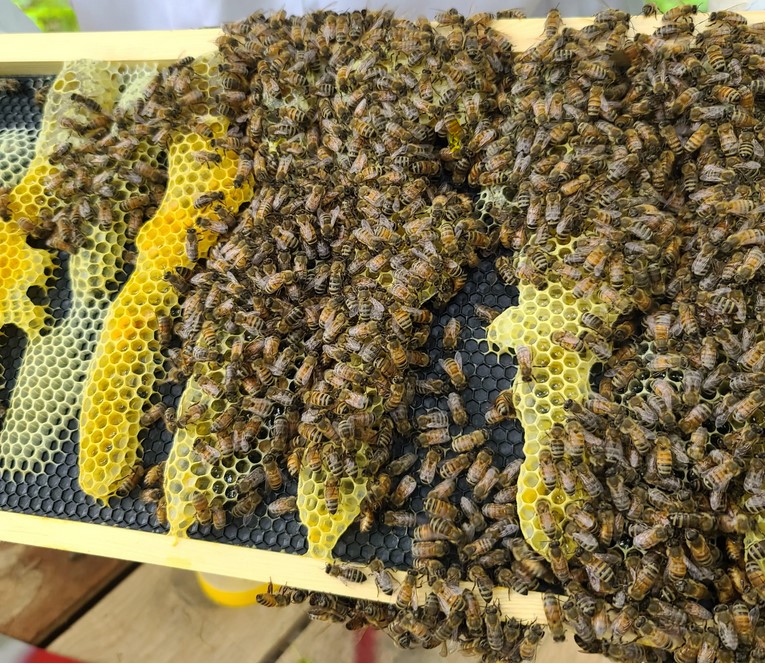
Poorly drawn drone comb on plastic foundation
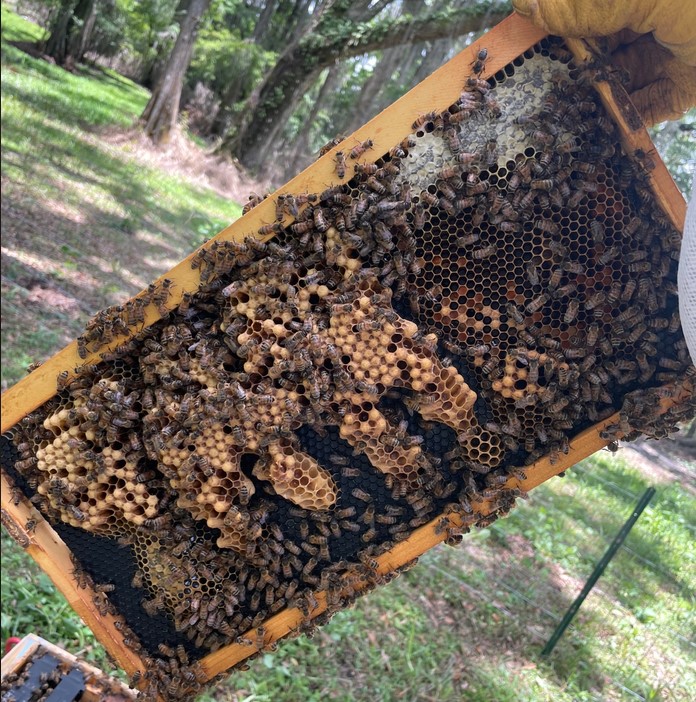
Brown Comb
New comb is so clean and white, why is this stuff all brown and gross?
This is just old comb, it gets darker and more brittle over time from propolis, debris, accumulated larva coccoons, etc. It’s normal and the bees will keep using it just fine. However, many keepers will scrape down 20-30% of their grody old frames every year, just to keep a turnover of nice fresh wax. People using wax foundation sometimes perform frame-change manipuations to replace old frames in bulk - An example of this is the Bailey Comb Change
Brown comb being fixed into frames with rubber bands during a cut-out
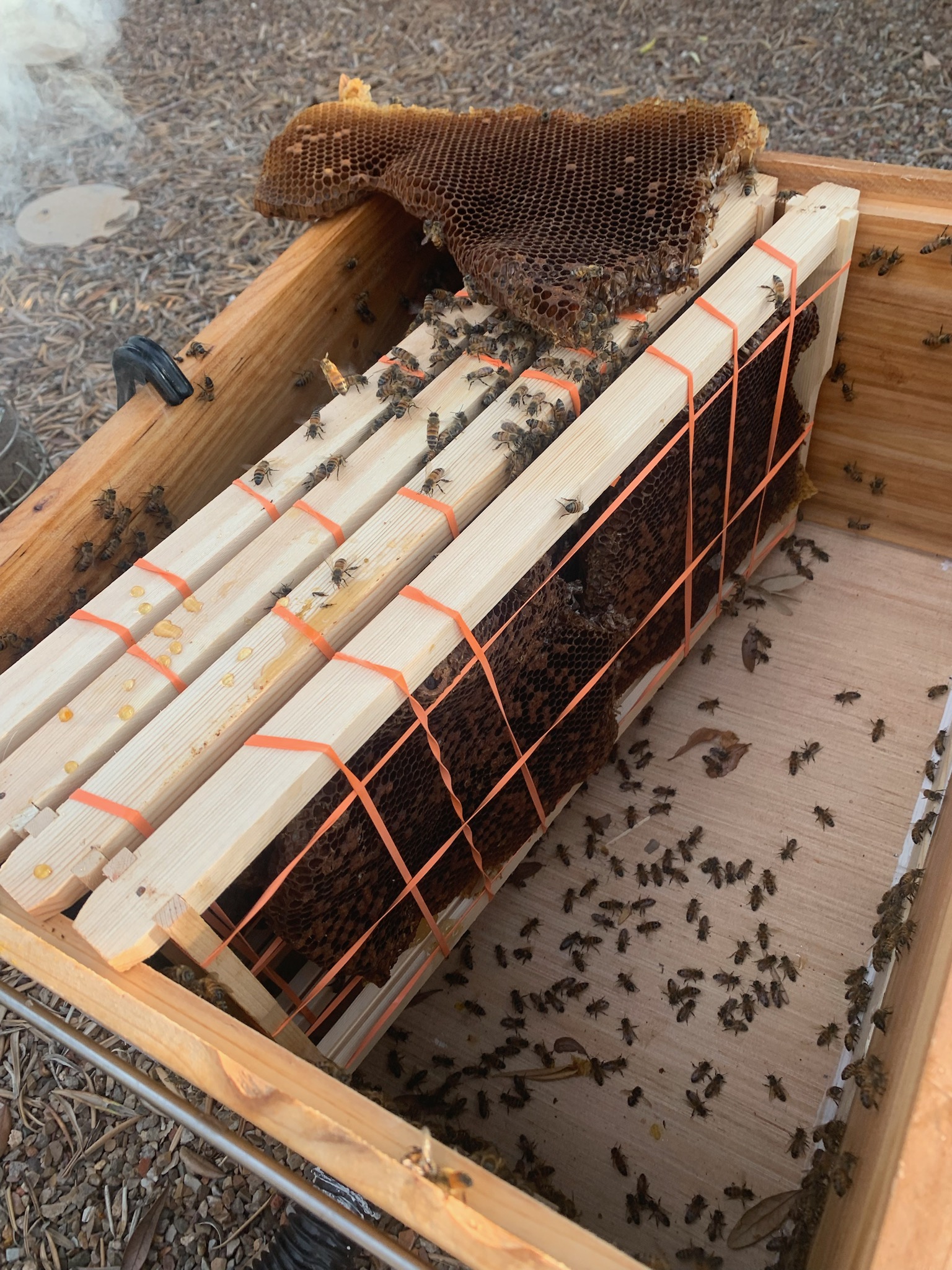
Natural Comb
Bees don’t naturally live in nifty square boxes with movable frames. Bees will build comb in any manner that is convenient for them given the shape of the space availible. Given ample room, however, such as under a bridge arch, bees will often build their hives with straight, evenly spaced combs such as the colony below.
